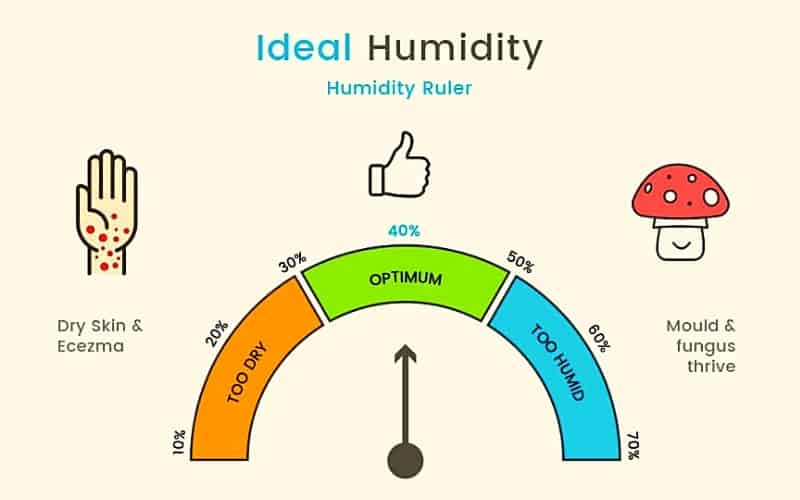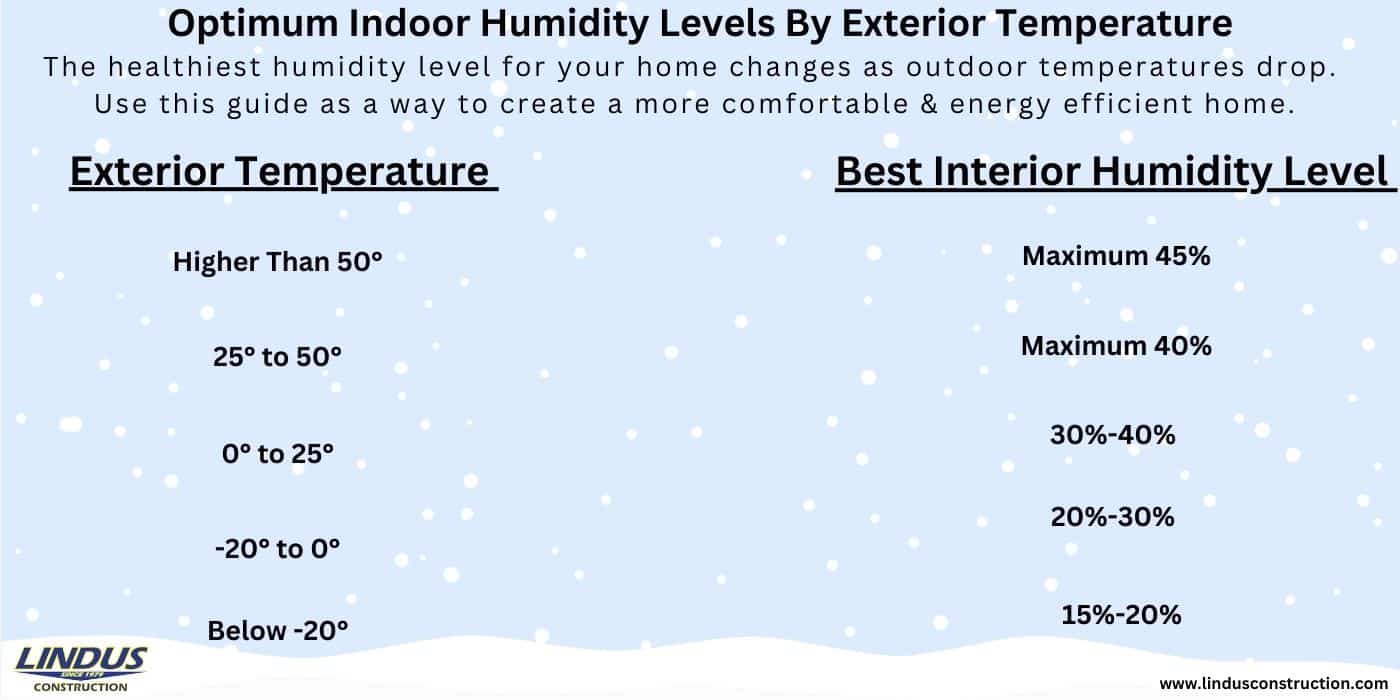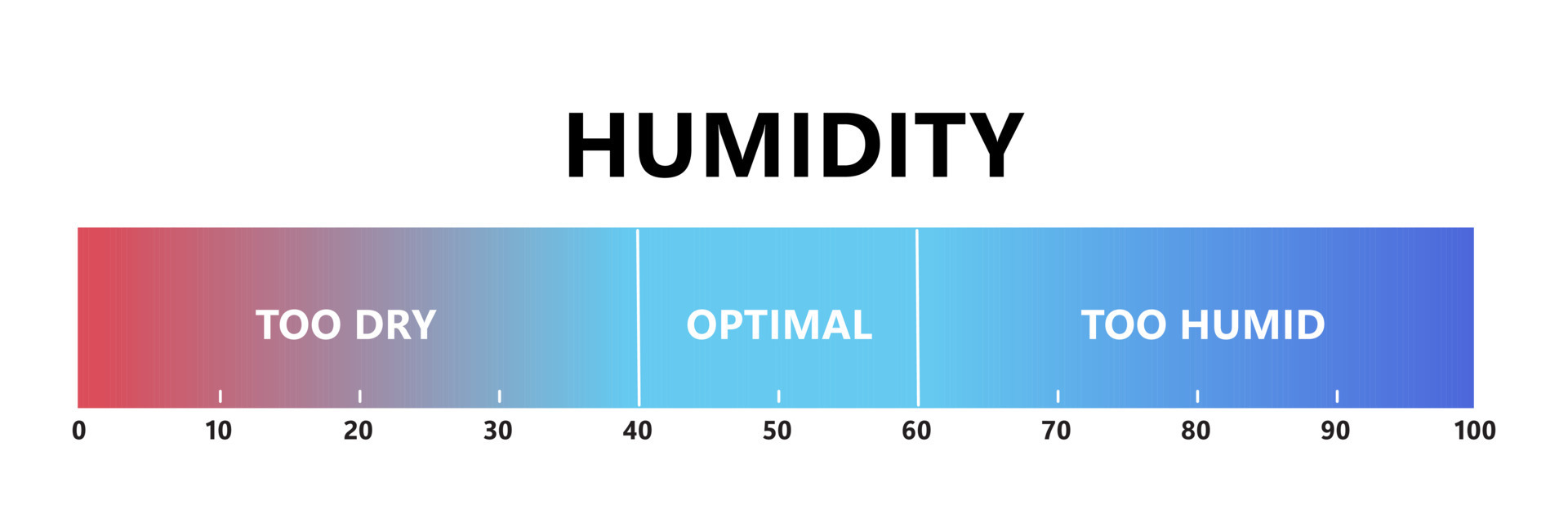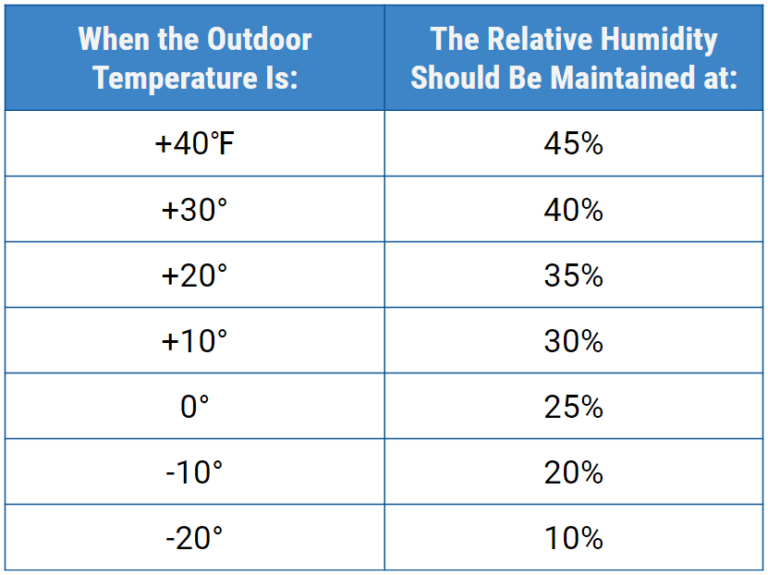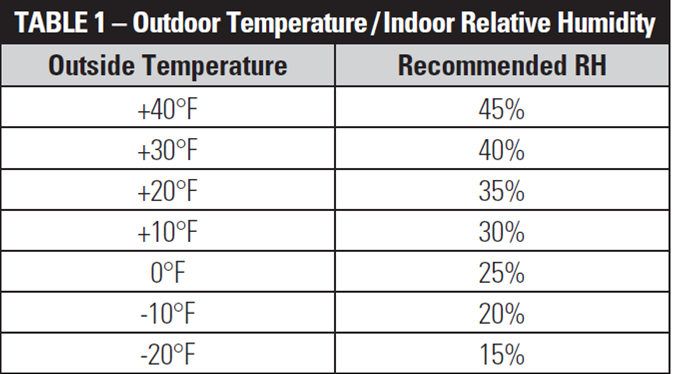What Is A Good Humidity Level In A House
.jpg?width=3508&name=Humidity level chart (1).jpg)
Understanding Humidity in Your Home: A Guide for Homeowners
Humidity, the amount of moisture in the air, plays a crucial role in your comfort and the overall health of your home. Too much or too little humidity can lead to a range of problems, from mold growth to dry skin and cracked furniture. Finding the right balance is key to maintaining a healthy and comfortable living environment.
What is a Good Humidity Level?
The ideal humidity level for a home typically falls between 30% and 50%. During the winter months, a slightly lower range of 30-40% is often recommended to prevent condensation on windows. In the summer, a slightly higher range, up to 50%, is generally acceptable. Maintaining humidity within this range helps prevent the growth of mold and bacteria, reduces the risk of respiratory problems, and protects your home's structure.
Why is Maintaining Optimal Humidity Important?
Beyond comfort, maintaining the right humidity level offers several significant benefits:
- Health: Excess humidity encourages the growth of mold, mildew, and dust mites, all of which can trigger allergies and asthma. Low humidity can dry out your skin, nasal passages, and throat, increasing your susceptibility to colds and other respiratory infections.
- Home Structure: High humidity can lead to condensation, which can damage walls, ceilings, and floors. It can also cause wood to rot and metal to corrode. Low humidity can cause wood to crack and warp, and can damage sensitive electronics.
- Energy Efficiency: Properly managed humidity can actually improve your home's energy efficiency. During the summer, drier air feels cooler, allowing you to set your thermostat higher. During the winter, humidified air feels warmer, allowing you to set your thermostat lower.
- Comfort: The right humidity level makes your home feel more comfortable. You'll be less likely to experience sticky skin in the summer or dry, itchy skin in the winter.
Identifying Humidity Problems: Signs to Watch For
Recognizing the signs of humidity imbalances is the first step in addressing the problem. Here are some common indicators:
- High Humidity Signs:
- Condensation on windows and mirrors
- Musty odors
- Visible mold growth
- Water stains on walls or ceilings
- Warped wood floors or furniture
- Low Humidity Signs:
- Dry, itchy skin
- Chapped lips
- Static electricity
- Cracked wood furniture
- Frequent nosebleeds
Tools for Measuring Humidity
The most common tool for measuring humidity is a hygrometer. These devices are readily available at most hardware stores and online retailers. There are two main types:
- Analog Hygrometers: These use a needle to indicate the humidity level on a dial. They are generally less accurate than digital hygrometers but don't require batteries.
- Digital Hygrometers: These provide a digital readout of the humidity level and often include a temperature reading as well. They are typically more accurate and easier to read than analog hygrometers.
Many smart thermostats also include built-in humidity sensors, allowing you to monitor humidity levels directly from your thermostat display or a mobile app.
DIY Solutions for Humidity Control
Depending on the severity of the humidity problem, you may be able to address it with simple DIY solutions:
- For High Humidity:
- Use exhaust fans: Run exhaust fans in bathrooms and kitchens while showering or cooking to remove excess moisture.
- Improve ventilation: Open windows and doors when the weather permits to allow fresh air to circulate.
- Fix leaks: Repair any leaks in your roof, plumbing, or foundation to prevent moisture from entering your home.
- Use a dehumidifier: A dehumidifier removes moisture from the air, helping to lower humidity levels. Choose a dehumidifier with a capacity appropriate for the size of the room or area you want to dehumidify.
- Air Conditioner Usage: Ensure your air conditioner is properly sized for your home. An oversized AC can cool the air quickly without effectively removing humidity.
- For Low Humidity:
- Use a humidifier: A humidifier adds moisture to the air, helping to raise humidity levels. There are several types of humidifiers available, including portable humidifiers, console humidifiers, and whole-house humidifiers.
- Boil water: Simmering a pot of water on the stove can add moisture to the air.
- Houseplants: Plants release moisture into the air through transpiration, helping to increase humidity levels.
- Air drying clothes: Instead of using a dryer, hang your clothes to dry.
When to Call a Professional
While some humidity problems can be addressed with DIY solutions, others require the expertise of a qualified HVAC professional. Consider calling a professional if:
- You have persistent humidity problems despite trying DIY solutions.
- You suspect a problem with your HVAC system, such as a malfunctioning air conditioner or furnace.
- You have extensive mold growth. Mold remediation should always be handled by a qualified professional to prevent the spread of spores.
- You are considering installing a whole-house humidifier or dehumidifier. Proper installation is crucial for optimal performance and safety.
- Your humidity problems are affecting your health. A doctor can help you determine if your symptoms are related to humidity levels and recommend appropriate treatment.
HVAC System Issues and Humidity
Sometimes, humidity problems are related to underlying issues with your HVAC system. Here are a few common culprits:
- Oversized Air Conditioner: As mentioned earlier, an oversized AC can cool the air too quickly without properly dehumidifying it.
- Leaky Ductwork: Leaky ducts can allow humid air to enter your home from the outside, increasing humidity levels.
- Dirty Air Filter: A dirty air filter can restrict airflow, reducing the efficiency of your air conditioner and preventing it from properly dehumidifying the air.
- Malfunctioning Evaporator Coil: A malfunctioning evaporator coil can prevent your air conditioner from cooling and dehumidifying the air effectively.
Cost Estimates for HVAC Repairs Related to Humidity
The cost of repairing HVAC issues related to humidity can vary widely depending on the problem. Here are some rough estimates:
- Ductwork Sealing: $300 - $1,000
- Air Conditioner Repair: $150 - $500 (depending on the issue)
- Air Conditioner Replacement: $3,000 - $7,000
- Whole-House Humidifier Installation: $500 - $1,500
- Mold Remediation: $500 - $3,000+ (depending on the extent of the mold growth)
These are just estimates, and the actual cost of repairs may vary depending on your location, the complexity of the job, and the contractor you choose. Always get multiple quotes from qualified HVAC professionals before making a decision.
Parts Commonly Used in Humidity Control Systems
Here's a list of common parts found in humidity control systems. Knowing these can help when discussing repairs with a technician.
- Humidistat: A device that senses humidity levels and controls the operation of a humidifier or dehumidifier.
- Solenoid Valve: Used in some humidifiers to control the flow of water.
- Evaporator Pad (Humidifier): A porous pad that absorbs water and allows it to evaporate into the air.
- Float Valve (Humidifier): Regulates the water level in a humidifier.
- Compressor (Dehumidifier): The main component of a dehumidifier, responsible for cooling the air and condensing moisture.
- Refrigerant: The substance used in dehumidifiers to cool the air.
Safety Tips
- Always disconnect power to the unit before performing any maintenance or repairs.
- Wear appropriate safety gear, such as gloves and eye protection, when handling chemicals or working with electrical components.
- Never attempt repairs beyond your skill level. If you are unsure about something, call a qualified professional.
- Be cautious when working with refrigerant. Refrigerant is a hazardous substance and should only be handled by licensed technicians.
Key Takeaways
Maintaining a good humidity level is essential for your comfort, health, and the preservation of your home. Regularly monitor humidity levels, address any problems promptly, and don't hesitate to call a professional when needed. By taking these steps, you can create a healthy and comfortable living environment for yourself and your family.
Remember, proper ventilation is key. Whether you're battling excessive humidity or dryness, ensure your home breathes. Consider using a smart thermostat to monitor and adjust your HVAC settings automatically. And always, when in doubt, consult a qualified HVAC technician. They are trained to diagnose and resolve complex HVAC problems, ensuring your home is comfortable and healthy year-round.
